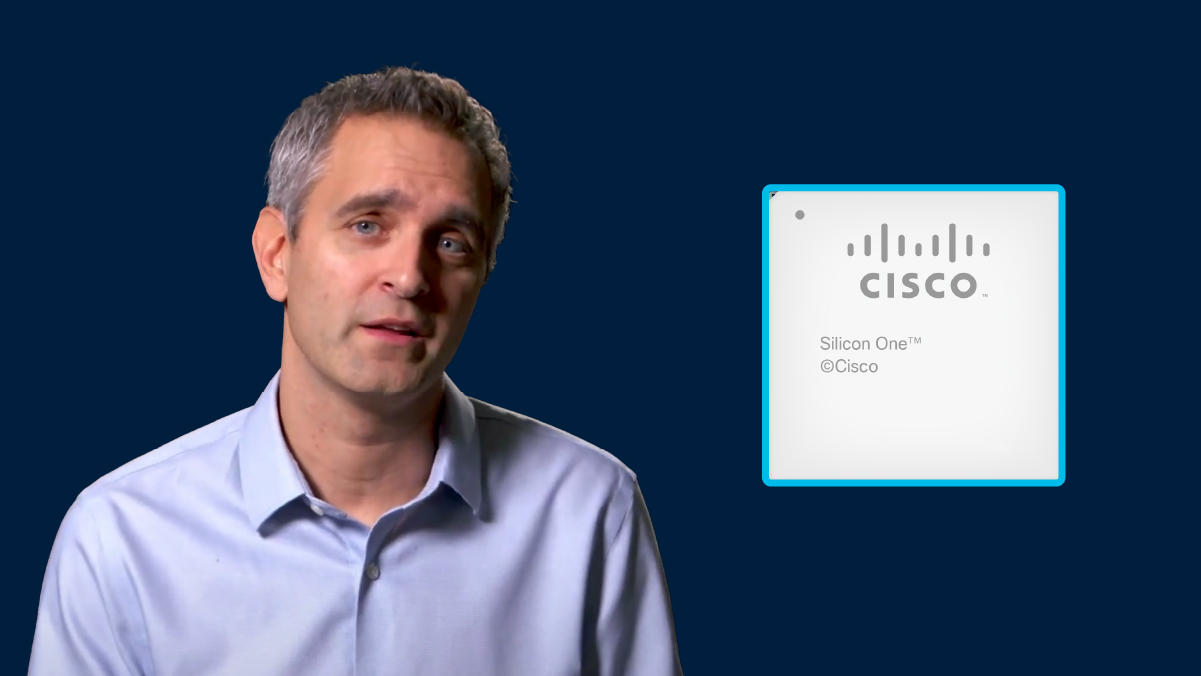It’s no exaggeration to say that Cisco innovations are changing the world.
And among those key innovations are the cutting-edge products for mass-scale infrastructure, built around the revolutionary Silicon One chip.
Giant web-scale operations and data centers are known for their immense energy requirements, and new demands on network capacity are challenging them as never before. But in this interview, Rakesh Chopra, a Cisco Fellow in the company’s Common Hardware Group, discusses how Cisco is countering these trends — with products that offer up to 2.6 times the bandwidth and four times lower energy demands. All while reaching more people around the world with high-speed, high-bandwidth connectivity.
Great to have you today, Rakesh! What are some of the key challenges that web scalers face in this age of cloud, high-performance computing, AI, and other complexities?
Great question, and thank you, Kevin. I think the bandwidth of cloud computing has continued to expand at an unrelenting pace. And it’s driven the web scalers to continuously expand their networks by building new facilities. Now this trend of bandwidth expansion isn’t stagnant; it’s actually increasing in response to a new breed of applications that are bringing services to the cloud. So video, for example, is moving from 4K to 8K. Gaming is moving from a physical-medium distribution to gaming directly in the cloud. 5G is putting pressure, not just on the service-provider infrastructure, but a lot of that traffic’s actually being backhauled into the data centers themselves. And one of the largest growth factors for these types of customers is the rise of artificial intelligence and machine learning and the high-performance computing associated with them.
At the same time, mass-scale data centers are using enormous amounts of energy. What impact is that having on the global environment?
The power draw of data centers is continuing to grow globally. There’s a study out there from InnerData that shows global data centers consuming more power than many countries. That’s a staggering statement, and that power consumption is only going to increase over time. It’s also my belief that power is actually the fundamental limit of our industry; it’s the problem that we must all solve together. Because it’s no longer the silicon or the optics that limit the bandwidth we can pull in the system. It’s the amount of power that we consume and how much heat we generate.
Which brings us to Silicon One, which was introduced in 2019. How does it continue to be such a game changer? Let’s talk about energy savings first, and then we’ll get into performance.
At Cisco, we’ve invented a set of fundamental technologies that allow us to build routing and switching silicon in a way that is completely different than anybody else in the industry. And the result is a massive power savings, beyond whatever anyone else can do in the industry. So, our latest piece of routing silicon that we announced about a year ago is more than 2.6 times higher bandwidth than any other routing silicon in the industry. And it enables us to build systems that are four times lower power than their equivalence.
So, it’s a win-win, on power consumption and performance.
One could imagine that to improve energy efficiency you’d need to sacrifice performance.
But that’s not the case with Silicon One. Silicon One enables a device that is not just 2.6 times higher bandwidth. It’s actually three times higher packets per second, so it’s higher performance, higher throughput, and more power efficient, all while still being programmable.
You mentioned the pressures from AI, machine learning, and the high-performance computing they demand. How does Silicon One lessen those challenges?
Silicon One is about converging your network, specifically in data centers at the front end of the network. But it’s also about converging and creating one network architecture for the back end of the network. Customers today, build these networks with legacy, proprietary interconnects. But they’re starting to move away from that, and they’re doing it for a few reasons. First is cost. If you look at what the interconnect costs today, using the proprietary technology, it’s up to 10 times more expensive than an equivalent ethernet network. This price premium was never ideal. But as bandwidth needs for AI and machine learning increase, this cost structure is completely unsustainable for them. Secondly, the proprietary interconnect is just not keeping up with the pace of innovation that we see in ethernet. When you combine these two together, it allows you to remove individual layers of the network. And that drives a huge layer of efficiency in terms of power, cost, and maintenance of the network.
Let’s talk about Cisco's latest Silicon One launch. How will this help our customers?
We’re actually launching two products this week based on Silicon One, G100 devices. The first is the Nexus 9232E, and the second is the Cisco 8111. Both of these products bring to market the industry leading bandwidth, density, and power efficiency. There’s also a great operational simplicity that you get by deploying these systems, because the G100 is fully programmable. While many switches in the network today are fixed function G100 is a fully programmable switch which enables it to evolve with our customer needs over time.
We’re talking mostly about the mass-scalers here, but Silicon One is expanding into a wider range of Cisco products. What impact do you see from that?
Silicon One, and the products that we build around it, are about giving our customers not just the best technology, but also giving them choices. More customers can now consume our technology in ways that they want to. We now have one architecture that you can deploy across your network and across different business models. That creates a massive level of simplification at the entire network level. And once deployed, you can imagine that maintenance now becomes massively simpler because everything is built on the same basic architecture, driving a very large CapEx and OpEx savings for our customers.
What excites you about the future?
I’m excited that we can make a fundamental difference to our planet. We’ve managed to launch 11 devices in under 22 months. And we now offer Silicon One in three of Cisco’s major product lines. All of that aligns with Cisco’s purpose of creating an inclusive future. It means that we can build sustainable networks like no one else can. And we can deploy high-bandwidth routing and switching to parts of the world that have never had connectivity before. Once you change the economics of the infrastructure, like we’ve done with these products, you can drive connectivity to new parts of the world — and change lives in a very fundamental way.
###




